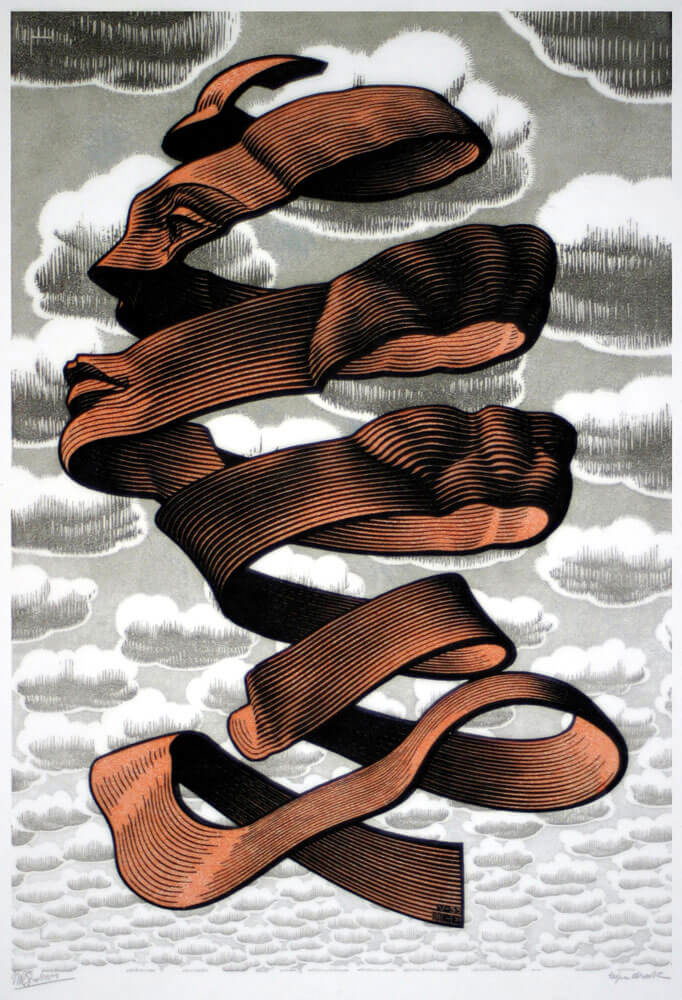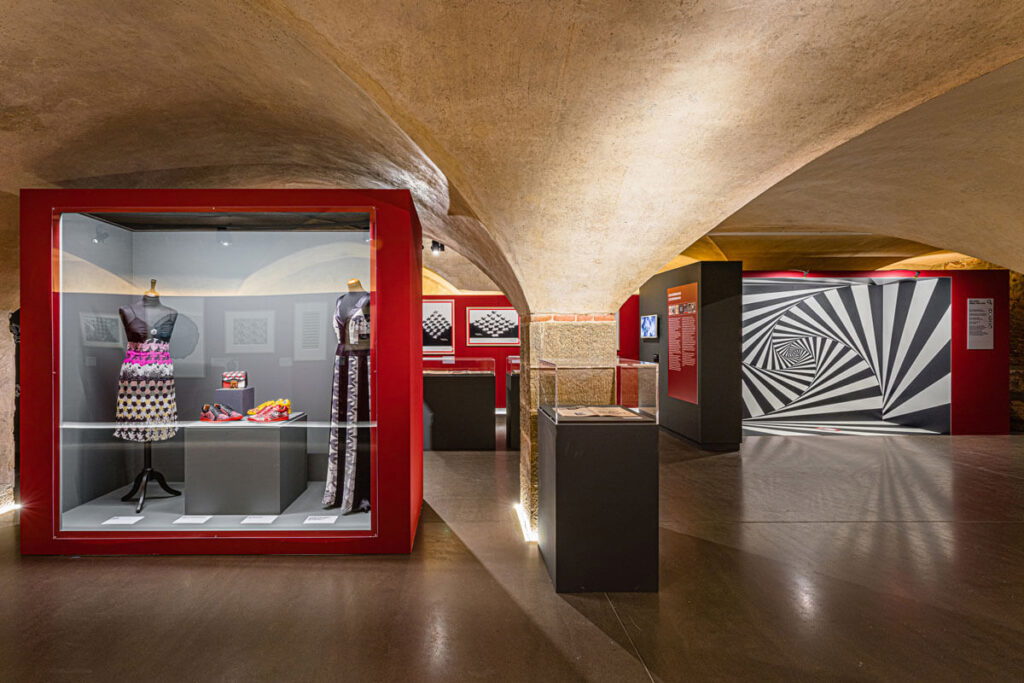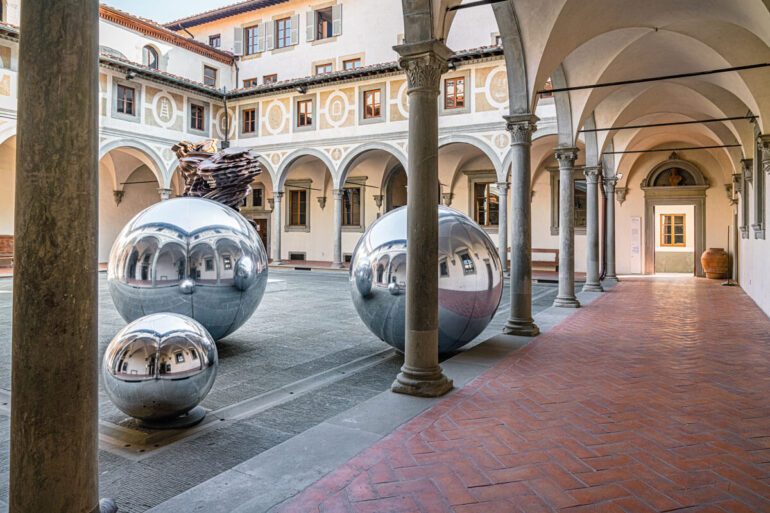A journey into the reality-bending universe of one of the world’s most famous graphic artists
Escher’s art has captivated millions of people around the world. His designs are paradoxical and whimsical yet remain grounded in perfect mathematical precision to produce mesmerizing worlds. But the man who created such works as Metamorphosis and Drawing hands was after much more than merely tricking the eye or creating intricate tessellations. A new exhibition at the Museo degli Innocenti in Florence not only traces the life of the artist, but it also displays a staggering array of his work throughout his life, alongside ingenious interactive elements that give viewers the opportunity to engage with Escher’s reality-bending world in a whole new way.
Maurits Cornelis Escher’s life spanned nearly three quarters of the 20th century from 1898 to 1972. Born in the Netherlands, he witnessed both world wars, the start of the nuclear age, the cold war and the first man on the moon – it’s not difficult to draw connections to the shifting enigmatic subjects of his art. The exhibition begins with some of his early woodcuts, revealing an artist that is precise and imaginative with an impeccable skill in graphic design. For fourteen years he lived in Italy where he was inspired by the Italian landscape and architecture. Many of these woodcuts are displayed alongside photographs of the places that inspired him, initiating the viewer into the exhibits overarching journey from a familiar visual reality into Escher’s imaginings. Extracts from his travel diary remarking on curious Italian customs characterize the man (not just the artist).

After leaving Italy to escape the country’s turn towards fascism in the 1920s, Escher’s works began to display what is now considered characteristic “Escher.” A checkerboard morphing into a tessellation of fish and birds. A two dimensional drawing of reptiles that emerge from their sheet of paper to crawl over items on a desk. A bird’s eye view of a landscape that morphs into a flock of birds passing between two identical cities, one in shadow, one in light. Works like Relativity and Belvedere draw you into impossible architectural spaces that play with concepts of infinity, perspective, and the very nature of reality.
Escher’s works become even more remarkable when you consider the techniques he used: woodcut, engraving, lithograph and mezzotint – something this exhibition highlights well with explanatory panels, videos of Escher himself at work and examples of some original woodcuts and metal panels beside the prints so viewers can compare the work of carving out the negative space in a block of wood to the final inked result on paper.

©2022 The M.C. Escher Company. All rights reserved
Apart from the works themselves, the exhibition at Museo degli Innocenti does two things well that I haven’t seen in previous Escher presentations. We’re all getting familiar with the selfie wall in museums that invite you to post with the appropriate hashtag but here, we’re invited further into mirrored rooms where we’re surrounded by swirling projections that bring Escher’s two-dimensional prints of three-dimensional objects into a new realm of animation, helping us “see” his work with a new understanding. In one of the most delightful aspects of the exhibition, you can actually “enter” an Escher print, seeing yourself in his world which takes the interactive elements from merely entertaining to enlightening.
There are also numerous interactive panels that invite you to understand the principles of optics that Escher used to warp reality. How does the eye perceive shapes, making order out of chaos and how can this be used to create an effect that at first seems part of the rational world and then, on closer inspection, reveals itself to be impossible? As Escher himself said:
“We adore chaos because we like to produce order”.

Lastly, the exhibition does a wonderful job of contextualizing his work, including relevant historical information as well as pieces that inspired Escher himself like Piranesi’s Imaginary Prisons. A final room helps us understand how wide reaching his images have become as we see Escher concepts in diverse modalities from the work of modern-day artists inspired by his designs to fashion to advertising to concert posters to numerous film clips. The imaginary spaces Escher produced in his lifetime continue to live on.
Beware, as you leave this exhibition, Escher will have you looking at the world around you in a whole new way.

Until 7 May, 2023
Museo degli Innocenti
Piazza della Santissima Annunziata, 13
Opening Hours: 9am-7pm
Entry Fee: €16








